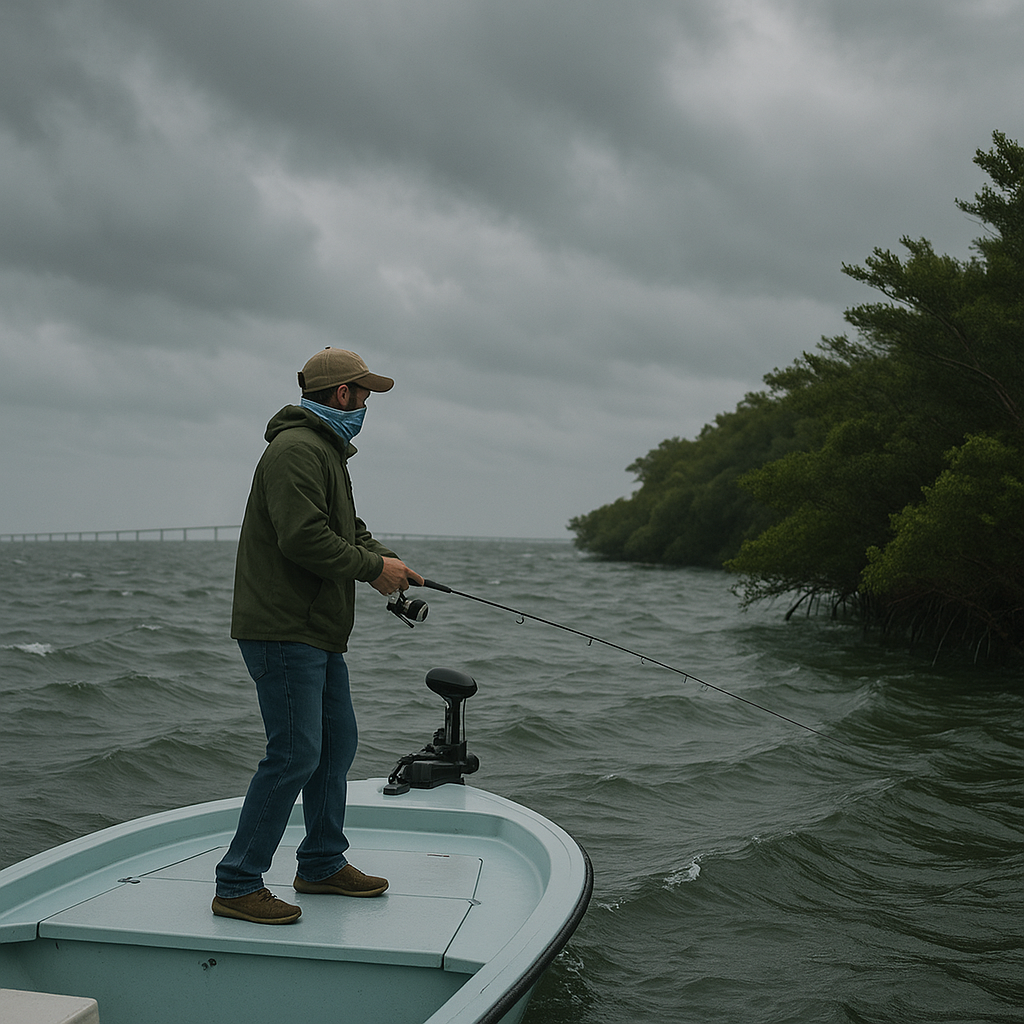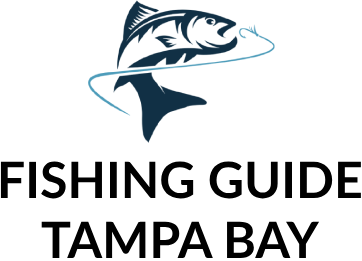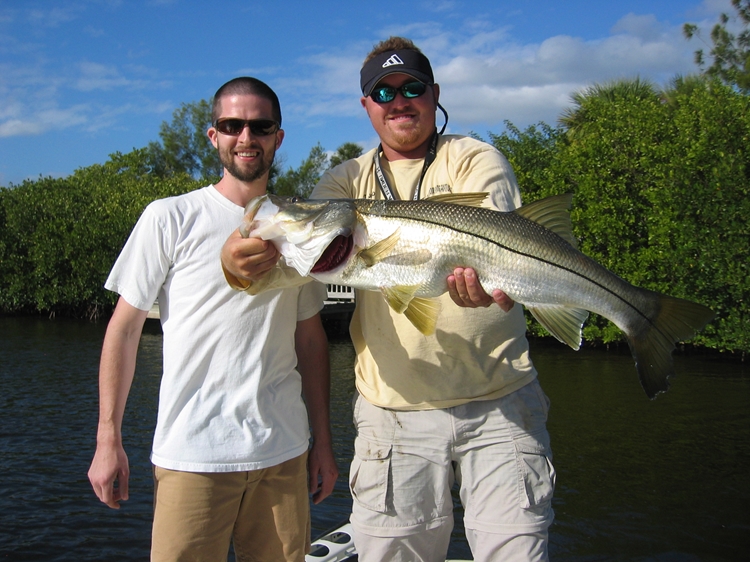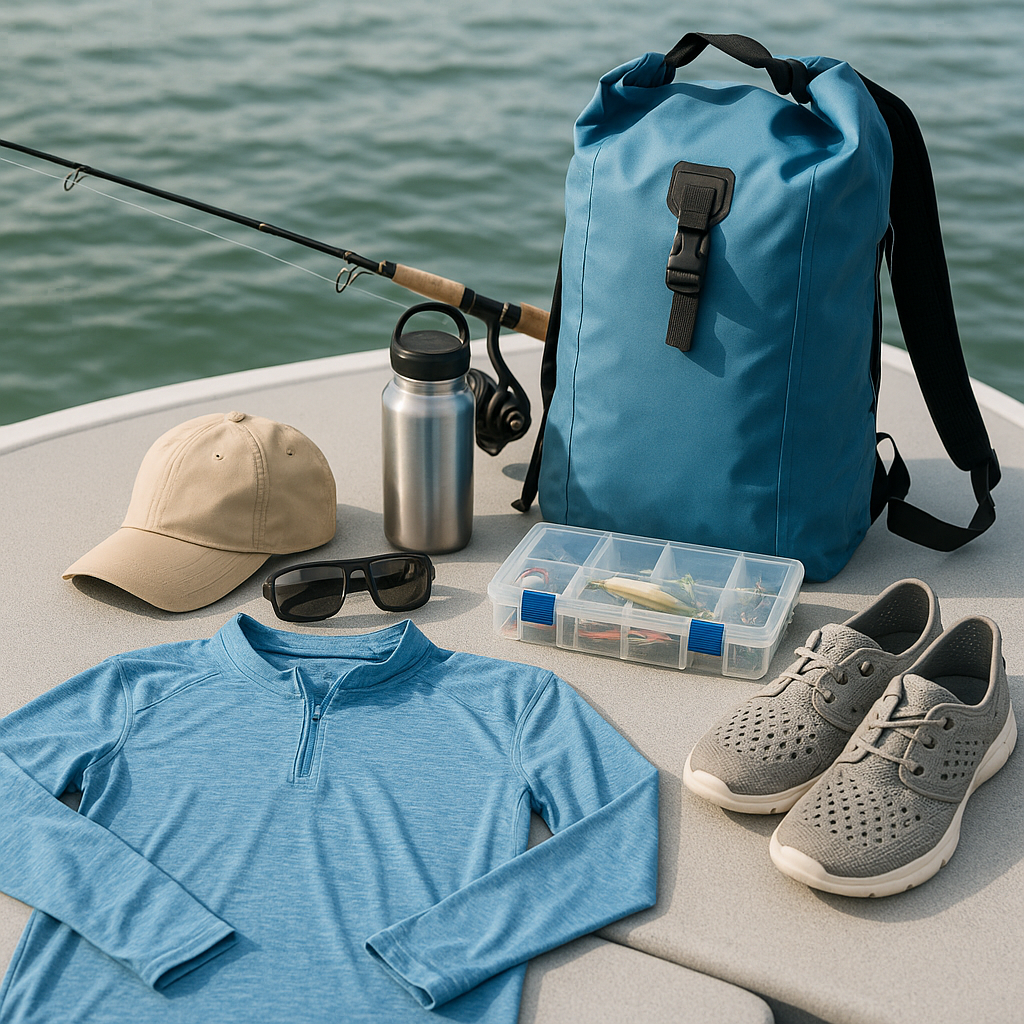By using our website, you agree to the use of cookies as described in our Cookie Policy
Wind runs the show on Tampa Bay. It moves everything - fish patterns, bait schools, even where you can fish. A north breeze sends fish to deeper spots. When it blows from the southeast, that's prime time for tarpon fishing. West winds rough up the bay and push you to find cover. East winds keep fishing simple and steady. Strong gusts empty the flats fast. Smart anglers duck behind mangroves, bridges, or islands - places where the water stays calm and bait sticks around. Not sure how to play the wind? Our guides read these patterns daily and know exactly where fish hide when conditions change.

- North wind: water clears, fish slow down, deeper spots get busy
- Southeast wind: tarpon roll, bait schools stack up, action heats up
- West wind: chop builds, visibility drops, only protected pockets hold fish
- East wind: steady, reliable, fish stay on the move but patterns hold
- High wind: find shelter, use heavier tackle, shorten casts
Water Clarity Tells the Story
Water clarity changes the game in Tampa Bay. Crystal clear means cautious fish and picky eaters - only perfect casts get strikes. But when storms churn things up, fish drop their guard. In murky water, they hunt by feel and sound, not sight. That's when inshore spots light up. Fish stack up around mangroves, oyster bars, and grass edges, using structure to trap prey in the dirty water. We switch tactics to match these conditions, keeping you in the action no matter how the water looks.
Tides mix things up too. Rising water brings clarity, especially during calm stretches. Falling tides pull mud and debris off the flats, turning the water coffee-colored. Good anglers adapt fast - throwing surface lures in clean water, switching to rattling baits when it gets muddy. Know what the water's doing, and you'll know what the fish want.
Storms Change Everything
Afternoon thunderstorms are a Tampa Bay signature. They don’t just bring rain, they flip the switch on fish behavior. Barometric pressure drops before a storm, and that’s when snook and redfish start feeding hard. The air feels heavy, the water gets restless, and every cast has a shot at a strike. After the storm, the bay settles. Fish regroup, and the bite often stays hot for hours. Lightning is non-negotiable. When it cracks, get off the water. No fish is worth the risk.
- Pressure drops: predators feed, bait balls break up, action spikes
- After storms: water cools, fish stay active, topwater lures shine
- Lightning: leave immediately, safety first
- Runoff: salinity drops, freshwater species push in, saltwater fish move deeper
- Weather fronts: feeding windows open, but close just as fast
Rain reshapes Tampa Bay's fishing zones. Fresh water floods in from storms, creating a mix that sends some fish running and calls others in. Redfish and snook love these conditions - they crowd near creek mouths and river edges where the water turns brackish. The best action often hits right as rain stops, when rushing water pushes bait fish into open water where predators wait. At Fishing Guide Tampa Bay, we track these patterns daily to put you where the fish feed.
Temperature Moves the Fish
Temperature drives fish behavior in Tampa Bay. When cold fronts hit, fish abandon the flats for safety. They pack into deep channels, bridge shadows, and holes where the water stays warmer. The action slows but doesn't stop - fish still eat, they just want it served slower. Live bait near bottom gets bites. As temps climb back up, fish spread across the shallows hunting bait schools. You'll see them smashing lures with attitude. Spring and fall bring peak fishing, but summer still produces if you hit the water early or late. Even during cold snaps, we know where to find them. Our charters adjust to these patterns, putting you on fish through every season.
- Cold snaps: fish go deep, slow down, target structure
- Warming trends: fish spread out, topwater action picks up
- Extreme heat: fish feed at dawn and dusk, midday slows
- Consistent temps: patterns hold, fish stay predictable
Rain Creates New Opportunities
Rain doesn’t ruin fishing in Tampa Bay. It creates new edges, literally. Freshwater runoff carves current seams where salt and fresh water meet. Bait piles up in these seams, and predators wait in ambush. The trick is to find the mixing zones, such as creek mouths, storm drains, and river outflows. That’s where the action happens. Choosing the right bait matters. Live shrimp, cut bait, or noisy lures get noticed in the churn. Even after a heavy downpour, the bay can produce some of the best catches of the season. The key is to move, watch the water, and fish the edges where conditions change. If you want to maximize your chances, our guides know exactly where to look after a rainstorm.
- Find current seams after rain
- Target mixing zones for aggressive strikes
- Use baits that stand out in dirty water
- Stay mobile, fish move fast after storms
Book Your Tampa Bay Fishing Trip
Ready to experience world-class fishing in any weather? Call Fishing Guide Tampa Bay at 813-540-4202 or contact us to book your next memorable fishing trip.
‹ Back







